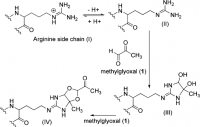AretnaP
Member
- Joined
- Mar 27, 2017
- Messages
- 180
Seems like it would be.
Lowers nitric oxide and antagonizes the NMDA "receptor" (anti-excitotoxicity). Seems like Peat (and people on this forum) would talk about it more.
I take it sometimes and if it has some bad effects I would like to know about them.
Lowers nitric oxide and antagonizes the NMDA "receptor" (anti-excitotoxicity). Seems like Peat (and people on this forum) would talk about it more.
I take it sometimes and if it has some bad effects I would like to know about them.

